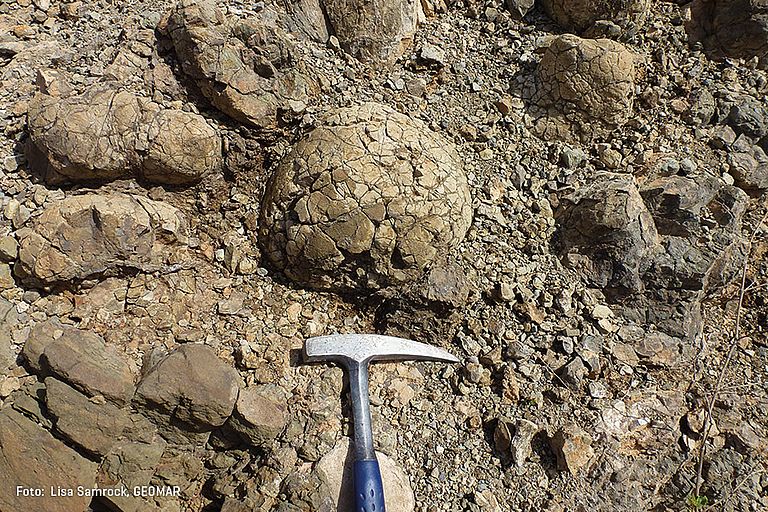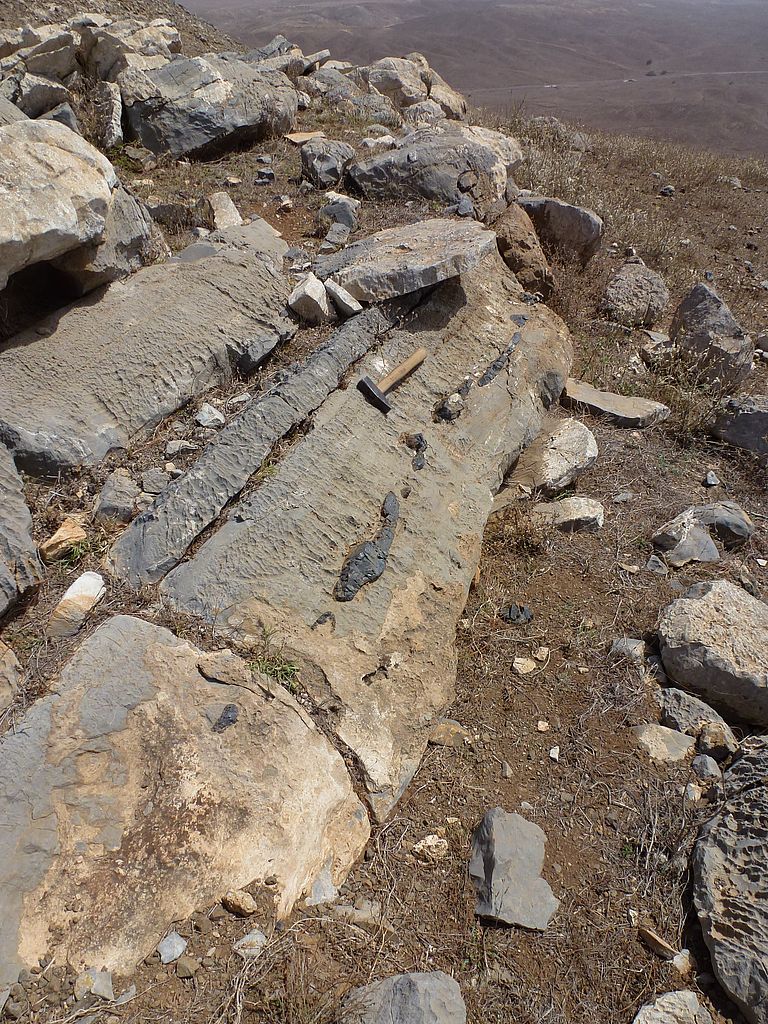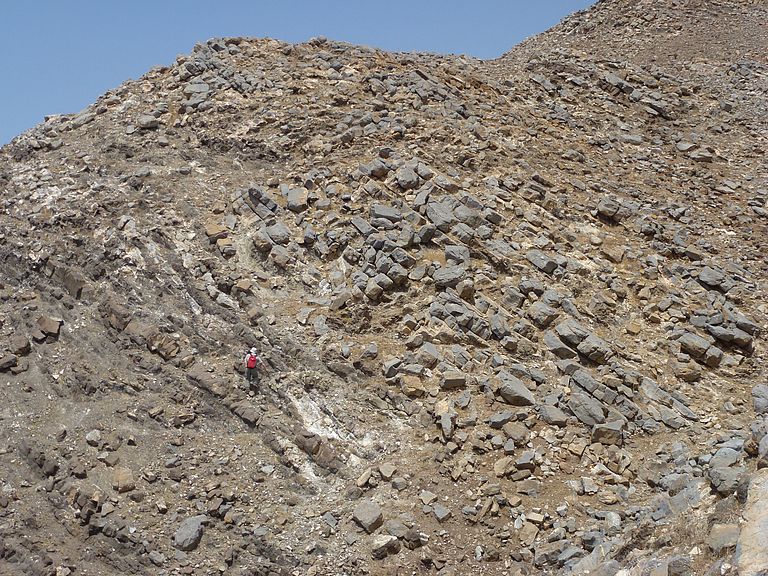Image of the Month: July 2018
Pillow lava on Maio, Cabo Verde.
The image of the month July 2018 shows a pillow lava on land of Maio island in the East of Cabo Verde. This island, as well as the other islands and seamounts of the archipelago, is of volcanic origin, and with an age of more than 20 Ma is also one of the oldest in the archipelago. Due to its aga, the island is already strongly eroded, the highest point on the island is only about 440 m above sea level.
The center of Maio is composed of intrusive rocks of the so called “Basement Complex”, which was formed by magmatic activity during the Miocene (ca 20-5 Ma). The center is, however, surrounded by much older rocks: pelagic limestones and pillow lavas of Cretaceous age (ca 140-110 Ma). The pillow lavas were formed about 140 Ma ago at the seafloor during the opening of the Atlantic Ocean. Above the pillow lavas, thick pelagic carbonaceous deep sea sediments were deposited, which contain remnants of foraminifera, coccolithophorides and radiolaria, and which nowadays crop out as fine grained limestones on Maio.
But how did the pillow lavas and limestones from the sea floor reach the surface? Magmatic and tectonic activity during the Miocene, and especially the formation of massive intrusions caused uplift of the rocks of the surrounding seafloor by more than 4000 m from the deep sea to the surface. Younger volcanic rocks that were deposited above were removed by erosion over time. Maio is therefore the only island in the archipelago, where the original sea floor is visible.
The picture of the pillow lava was taken during an expedition on Maio. During this field campaign, scientists from GEOMAR sampled the oldest volcanic rocks on Maio, in order to date the beginning of volcanism and analyze corresponding processes.





